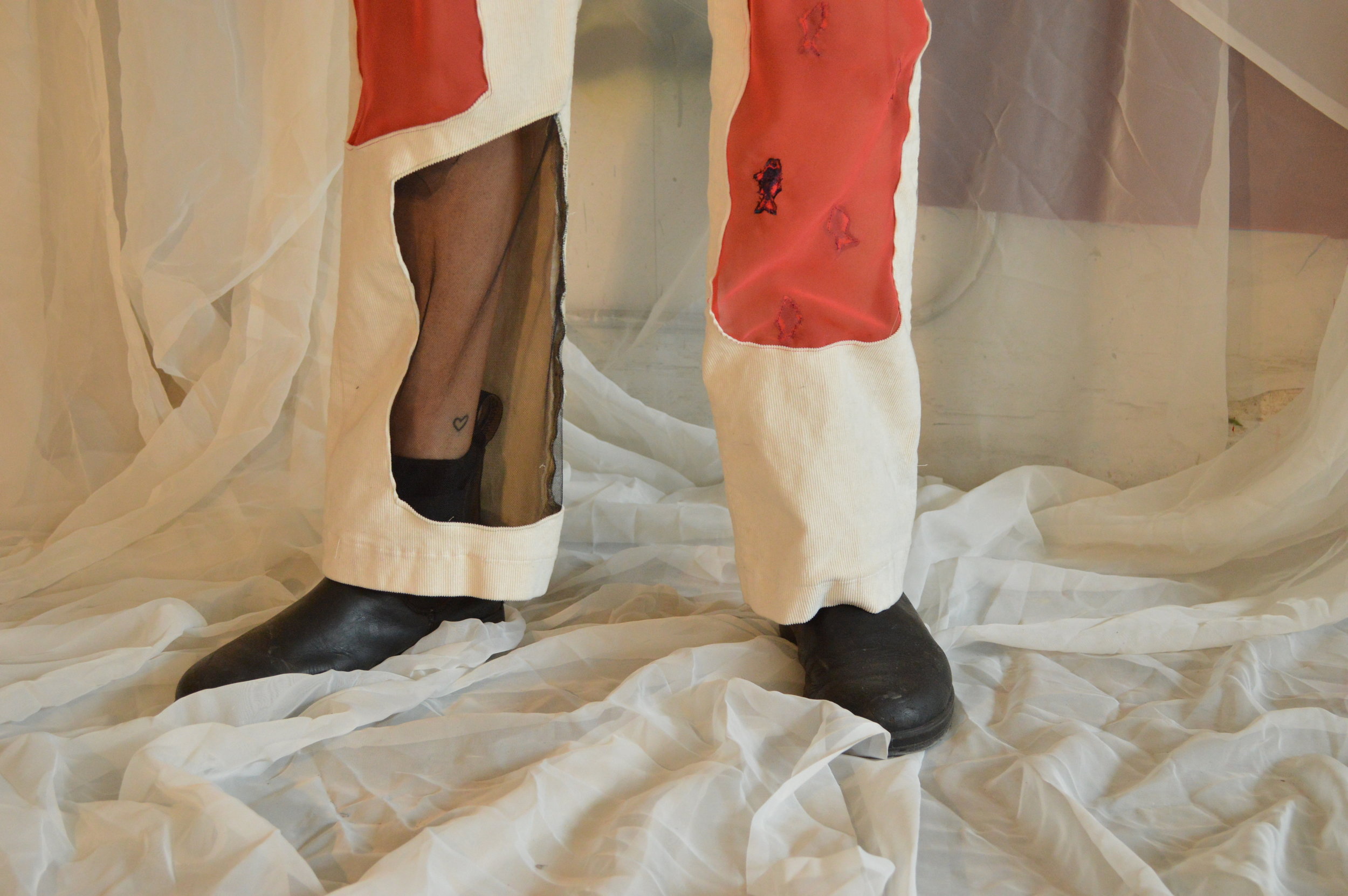Is this Art Experiment the Future of Shopping?
Written by Isabella Achenbach
From Detroit to Bogotá to Mexico City, artists are examining alternative options in the production and circulation of material objects.
Forget Somerset.
MALL is an experimental store and gallery located in Bogotá, Colombia, that focuses on the creation and dissemination of one-of-a-kind handmade garments and wearable art objects. Founded in October, 2018 by artists Adriana, Daniela, and Juliana (last names withheld by request), MALL has thoughtfully situated itself in the commercial world of art and fashion, utilizing these markets to subvert and explore global standards of commercial mass production through an artistic lens. The project promotes alternative, often political, ideas around making and consuming, both on an individual level via the artists they represent and works they show, and as a larger concept space.
“MALL aims to make art a vital part of life by approximating it to our everyday experiences. The clothes are artworks, the artworks are clothes, and the people who buy and wear them are moving public exhibitions, dematerializing the work into a social process: a place of conversation and a pedagogical exercise,” says the proprietors.
Essential to its existence as a physical space, be it the Bogotá gallery or the many international pop-up iterations, is the gathering of people to further conversations about contemporary art and its relation to other disciplines. MALL aims to circulate and discuss art outside the institutional, domestic, and digital walls.
This month, MALL is operating a pop-up store and program of talks and workshops in two Mexico City locations: El Museo Tamayo, a contemporary art museum, and Lagos, an artist residency space. In line with their global interests, MALL is showing work by artists from Colombia, Argentina, Puerto Rico, Mexico, Uruguay, Bolivia, Chile, and the United States, including two Detroit artists Bobby Ladan McFarlin and Kit Parks.
Grand Circus Magazine has the exclusive look into the Detroit artists’ work for MALL.
G E A R u n l i m i t e d
Photographs courtesy of Bobby Ladan McFarlin
Bobby Ladan McFarlin, the artist and designer behind unisex brand G E A R u n l i m i t e d, will “add taste” to your everyday look. McFarlin’s work—in ethic and ethos—doesn’t stray far from his Detroit roots, with heavy references to the materials, styles, and fits of Detroit’s iconic workwear. But McFarlin’s designs aren’t just made to last forever (with the perfect back pocket), they are handcrafted to make any look ready for the street, club, shop, and studio. Gradients of reinvented denim, neon sportswear, and unlikely sourced uniforms populate the G E A R u n l i m i t e d racks, each piece hand-worked and one-of-a-kind.
While maintaining a workwear aesthetic and quality, McFarlin’s designs also have a clubwear attitude—a nod to Detroit’s long-standing style and music legacy. (Think: Aretha Franklin, techno rave, Carhartt). Every piece is embellished with applique flames, distressed with love, bleached, dyed, or painted. McFarlin starts with the most pared-down canvas, hacks it apart, and reconstructs it with both rough and precise craftsmanship. His work was quickly noticed by local celebrity Big Sean, who invited him to work as a stylist on the Kid Cudi/Big Sean national tour.
At once he is championing the timelessness of a simple white gas station t-shirt (when asked for more information on this, McFarlin simply said, “go buy one,” with a grin), the sexiness of custom-fit jeans, and the boldness of the Detroit attitude.
“Detroit is the Motor City. We are a working city; a grinding city. Throughout the week, people are wearing workwear. We wear Carhartt, a Detroit brand, or we’re wearing Dickies. So, with a lot of my designs I try to stick to that same silhouette; it’s so embedded in Detroit’s style," McFarlin said. "But on the weekend, it’s Jeans and Moet [ed: a bi-annual party held in Detroit since 1982], where you come in with the most stylish jeans in your closet.
Even if it’s summertime, you’re wearing denim to the club. I try to mesh the two styles: workwear and clubwear. You could wear it on the weekend or work in it.”
Kit Parks
Photographs by Adam Desjardins
Kit Parks doesn’t make clothing, they make portals. Allowing entrance to humor, friendship, life, and death, Parks plays with both conceptual and literal portals in their creation of unisex wearable objects. The literal portals manifest in carefully constructed patches of transparent vinyl, chiffon, nylon, and tulle fabrics that both protect and expose the body in unexpected places. Upper thighs, nipples, large swaths of the shin, hip, waist, and back are all vulnerable to this veiled effect. Parks prints and sews into the transparent fabric, loading each portal with found imagery from field guides and vintage craft, pornography, and popular culture magazines as well as micro and macro landscape photographs shot by Parks.
In their work, the human form is another material, not just a canvas, as one might describe in the world of fashion, but a collaborator in communicating and connecting with the natural world, irreverent notions on gender and sex and “the celestial soup” which Parks frequently mentions in their work. The celestial soup is a black hole, a portal, that Parks calls upon to collapse, relate, and grapple with environmental crises, notions of beauty, waste, systemic gendering, humanity, and post-humanism.
In this black hole, photographs of plant species, forests, and urban road kill converse with Robert Mapplethorpe-like images of the “perfect” chiseled buttocks, all of which overlay synthetic, hyper-processed textiles and, finally, a living body in the flesh. Parks’ work transcends craft, design, collage, photography, body art, and performance.
“There’s not a distinction between any of it,” Parks says, referencing their source materials and motifs. “We’re all just parts of the celestial soup.”







